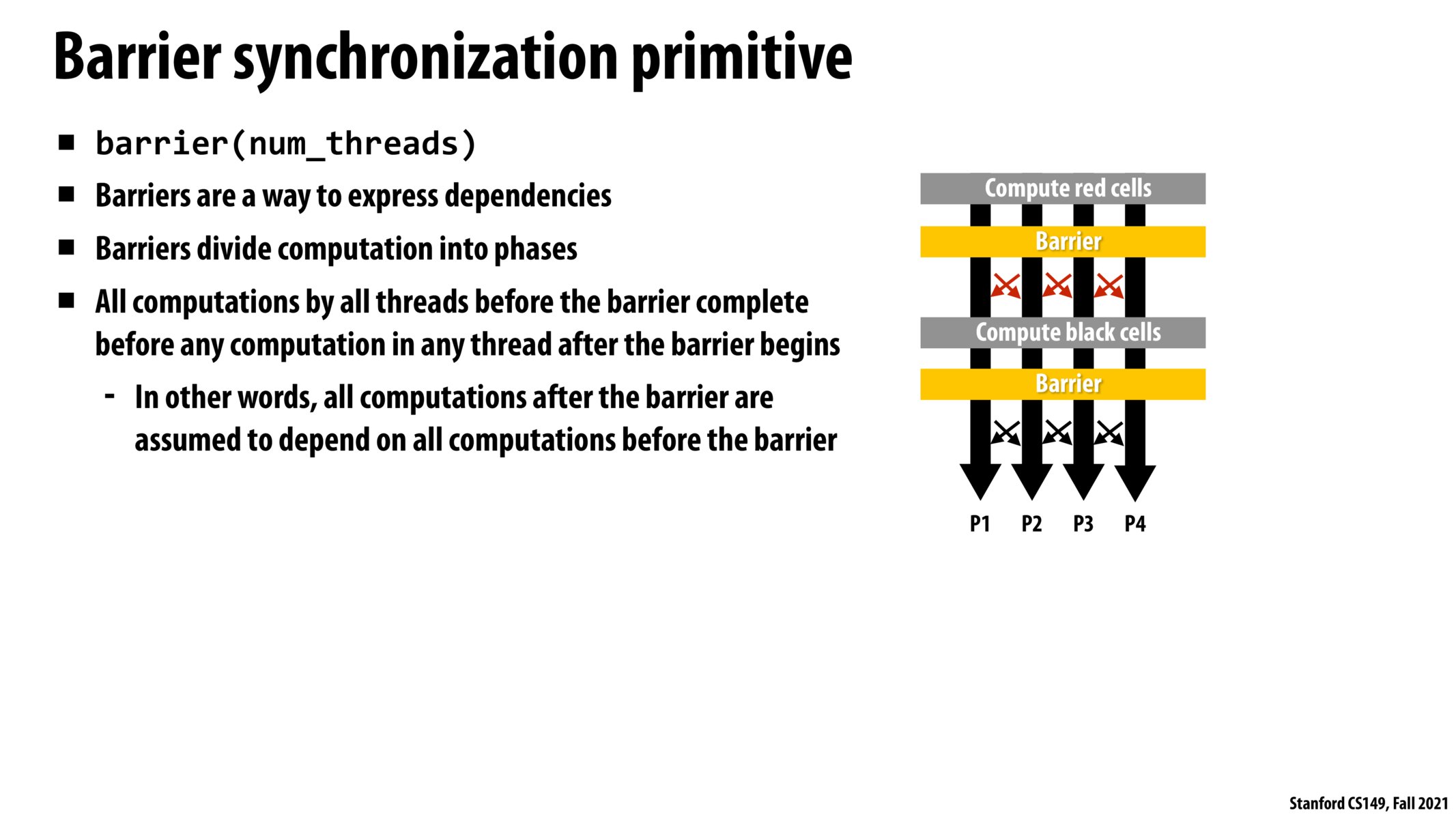


A barrier is a synchronization primitive, which is different from pthread_join() as mentioned in the lecture. pthread_join() blocks the calling thread until joining threads complete. Instead a barrier allows all threads to continue executing.

Hm, this barrier is an interesting concept, but I am a fairly experienced Python programmer and I haven't seen an equivalent in Python. I wonder if it is underused, or simply was never implemented in that language.

Could one use a semaphore as a certain type of barrier. E.g. All threads take a lock while they are doing their work, and then sping through a while loop that checks to see when they are all returned?

@matteosantamaria A C++ programmer here :-) As far as I understand barrier is a common abstraction, so I did a quick search of keyword Python Barrier out of curiosity -> there is a barrier in Python with the same semantic (https://docs.python.org/3/library/threading.html#barrier-objects)

Barrier synchronization seems pretty useful. With most synchronization variables the implementation of it is fairly simple. Semaphores are reasonably implemented with locks and some state variables. Would a barrier be implemented similarly? Perhaps you could use a condition variable along with a count variable that decrements when a new thread begins waiting and the condition is only met when count is 0.
Please log in to leave a comment.
Is the barrier primitive only specific to parallel computing or is it used in other types of programming and computing models? I've seen a similar barrier primitive used in a different context when writing low-level code for device drivers. I don't know if they're both related in the way they're usage